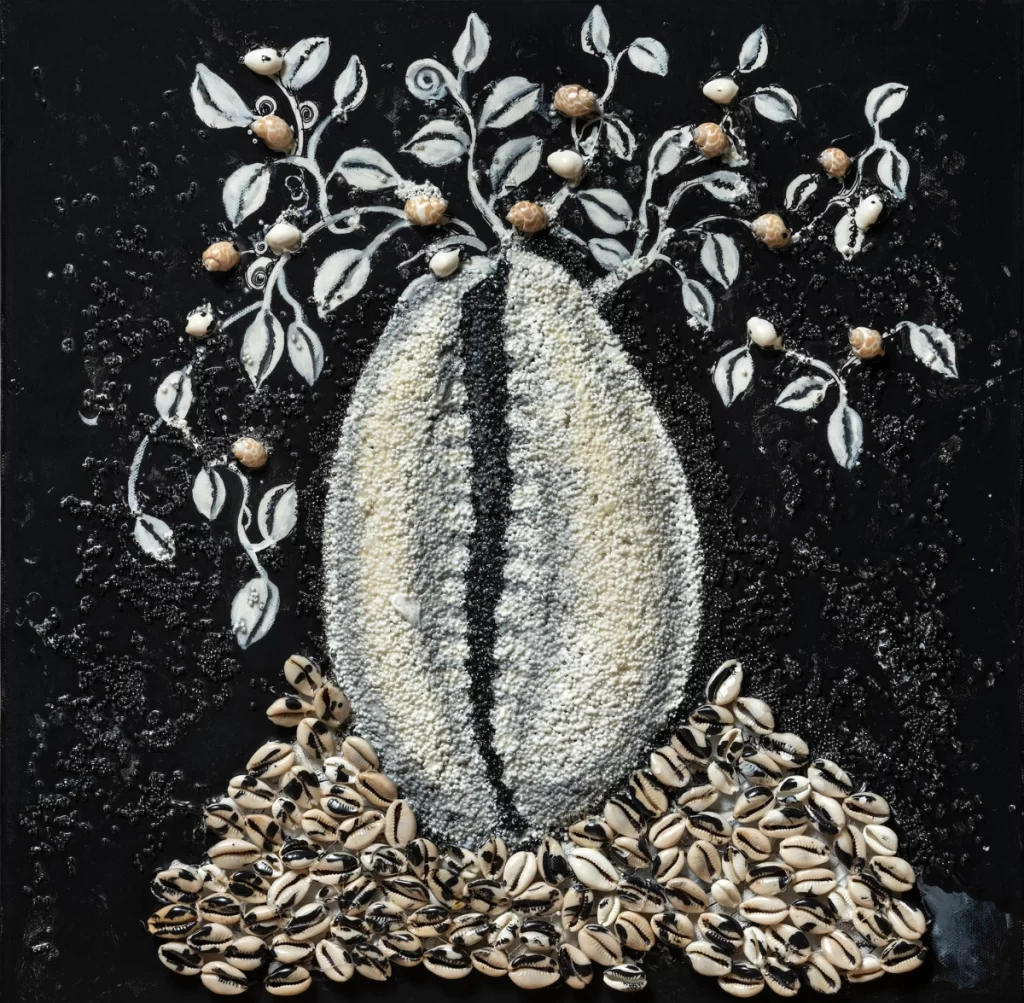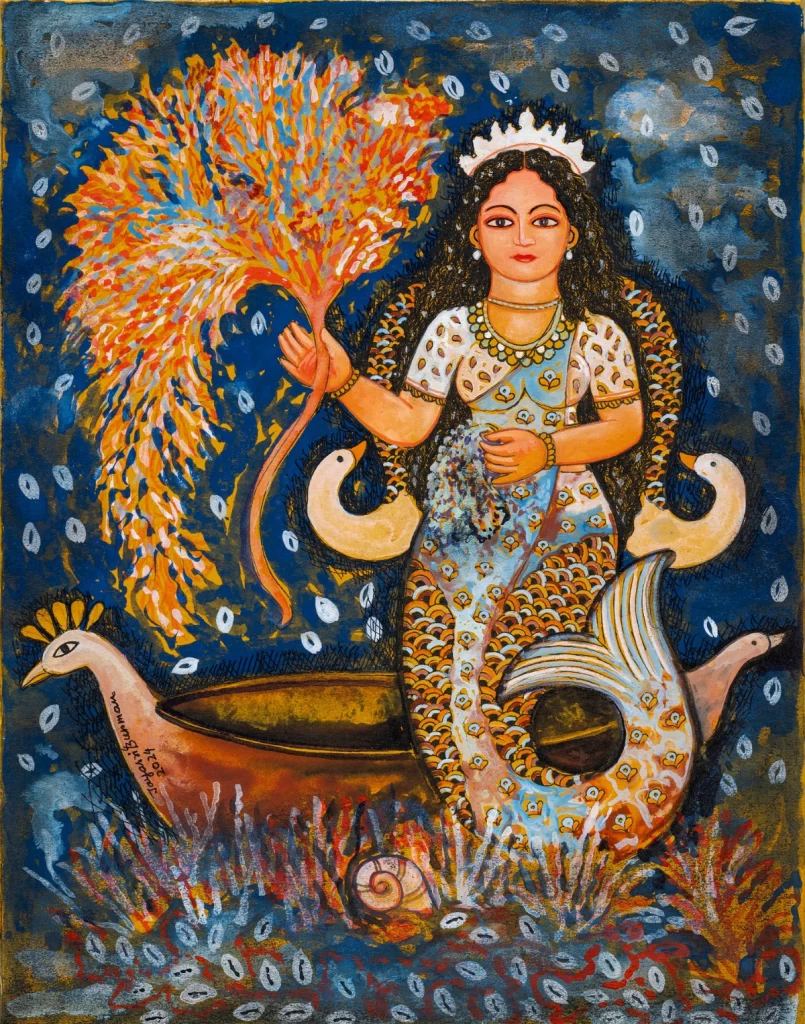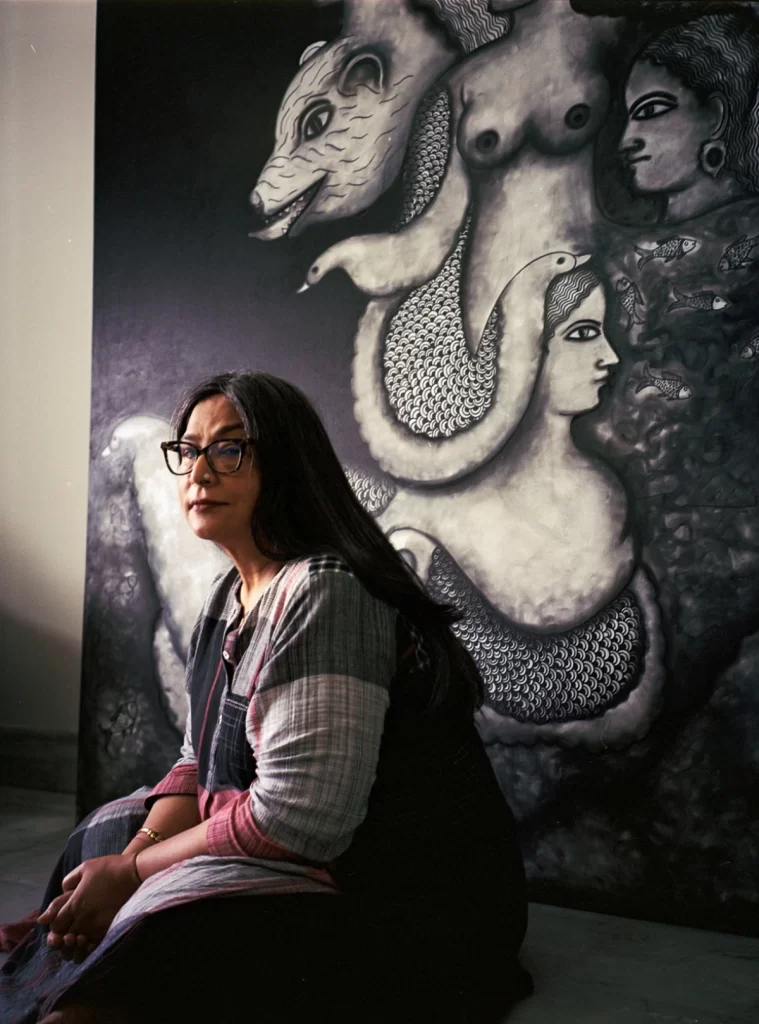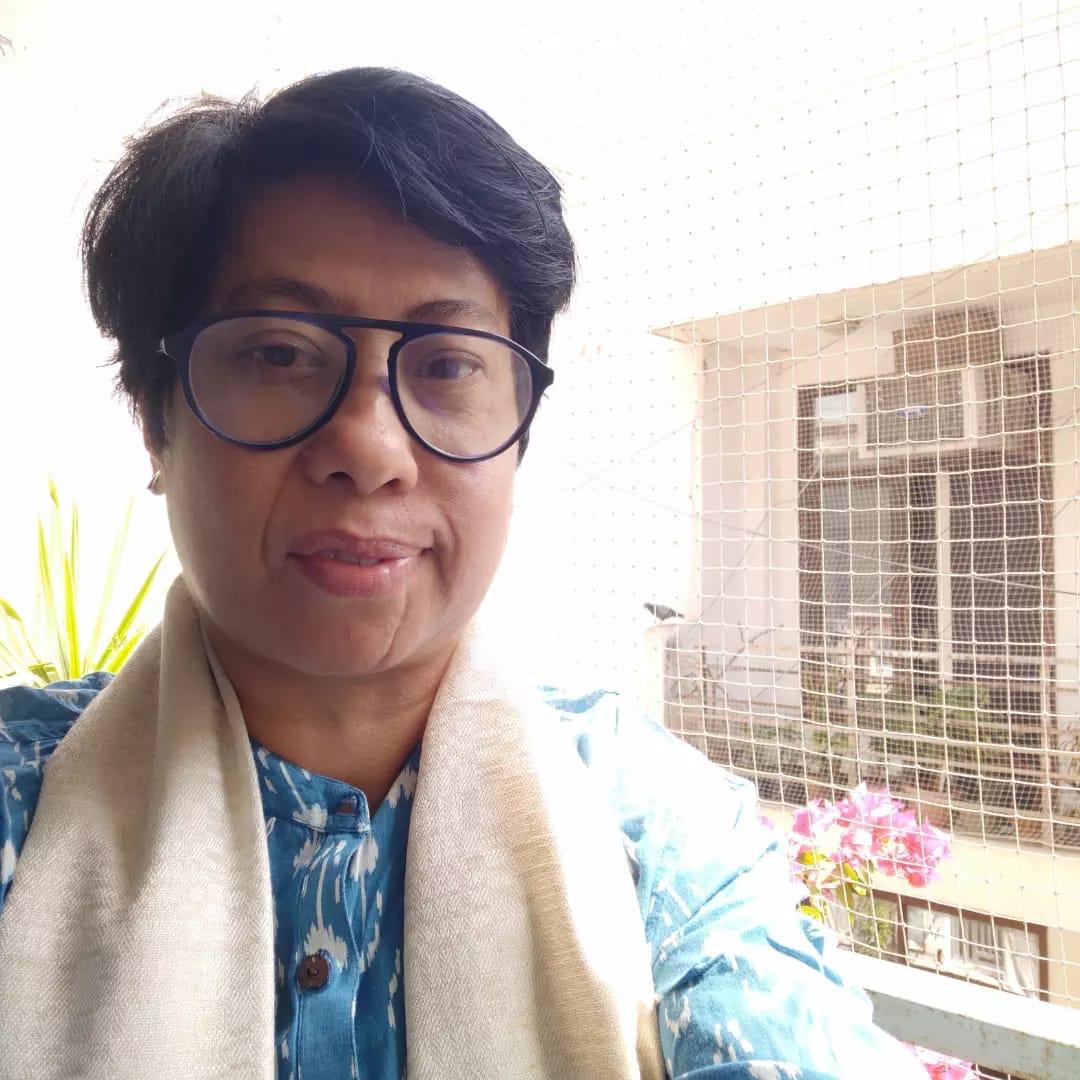Jayasri Burman Presents at Art Alive Gallery
Jayasri Burman’s solo The Whisper of Water, The Song of Stars at Art Alive Gallery brings a rich body of recent work that celebrates the female energy in colour and black and white. The show will be on view till 25th February 2025.
Jayasri Burman’s Artwork At The Exhibition
As one enters the gallery, to view artist Jayasri Burman’s solo, a large diptych showcasing two Baul singers greets one on the central wall facing the door. The work made of watercolour, pen and ink, and charcoal on paper pasted on board, passes for a canvas at first glance, since the treatment is as detailed and impressive as her large canvases. Contrasting this, on the left and right sides, are small format, early works from Burman’s days at Santiniketan and one sees an initial emergence of the strong line and flair for detail that characterizes her later work. “I had not shown these early works till now and I thought if I created the context of Santiniketan where I heard both Pavitra and Parvathy Baul it would give the works a context to be viewed,” says the painter who is showing a large body of work after processing for three to four years on the large works and some smaller paintings go back to 2015—mixed media collages on canvas also viewed for the first time.

Collaged Mixed Media on Canvas, 18 x18 in.
Courtesy – Art Alive Gallery
On the second floor, the canvas titled Weeping Grace features the three Goddesses Laxmi, Kali and Saraswati in the dense forest with foliage, birds and shells is an arresting study. It captures the quality of women that is her fierceness, her patience and her love. Rendered in oil that large work (72×96 inches) holds the viewer in a mesmerizing conversation. “Weeping Grace, which is a title that I have used for my large canvases that feature women/Goddesses, speaks about their empathy. The ability to weep but yet be strong and resilient,” says Burman. This energy pervades many of her works and her life as well.
The Motifs Featured in The Whisper of Water, The Song of Stars
The primary motif that characterizes this exhibition is cowry shells, that are auspicious as well as symbols of female fertility. “If you look at the shell its inner surface resembles the female organ while its outer half is the pregnant belly,” explains Burman. Cowrie shells have held cultural, economic, and ornamental significance in various cultures. The cowrie was the shell most widely used worldwide it is present in vast quantities in the Indian Ocean. Water is an important motif as well because the Bay of Bengal is a nodal meeting point for many rivers, from the Ganga to the Hooghly, and it also marks the confluence of the Arabian Sea with the Indian Ocean.

Water colour, Pen and Ink, Charcoal on shikishi board, 16 x 12.5 in.
Courtesy – Art Alive Gallery
The exhibition invites one to an immersive journey in her enchanting universe exploring the cosmic connection of stars and water bodies, the harmony of colours, and the expanse of mystical landscapes. Jayasri Burman’s artistic odyssey is a testament to her deep connection with tradition, retold through a modern perspective that echoes the concerns of today, weaving together the colourful threads of ancient mythology, the alluring glory of nature, and the unyielding power of women. Moving beyond mere imitation of the mythologies, Jayasri infuses these age-old tales with her own experiences and the exploding desires of the unconscious from a contemporary perspective.
Jayasri Burman on the Medium
“I remember at the age of 8 years old, I had visited the Bay with my Ma and Baba and while Baba swam Ma and I were busy collecting cowry shells,” says Burman tracing back the memory. “We visited the market place and there were piles of shells, corals and all kinds of wonders of the sea. I love their smell as much as I love their form, I have them collected in my studio and they have been a constant source of inspiration,” says Burman.

“I have faced so many struggles and yet I can be strong. I have friends who call me a Diva, and I just laugh it off, because more than anything it is the ability to persist that women are known for and it is that force that governs my work,” she concludes.
Image – Jayasri Burman’s Cosmic Churn-3 (2024), Mixed media (clay, acrylic, sand, cowrie shells, fevicol on canvas), 15 x 43 inches; Courtesy – Art Alive Gallery

Georgina is an independent critic-curator with 18 years of experience in the field of Indian art and culture. She blurs the lines of documentation, theory and praxis by involving herself in visual art projects. Besides writing on immersive art for STIRworld, she is a regular contributor for The Hindu, MASH Mag and Architectural Digest.





